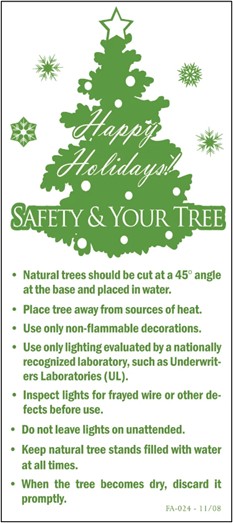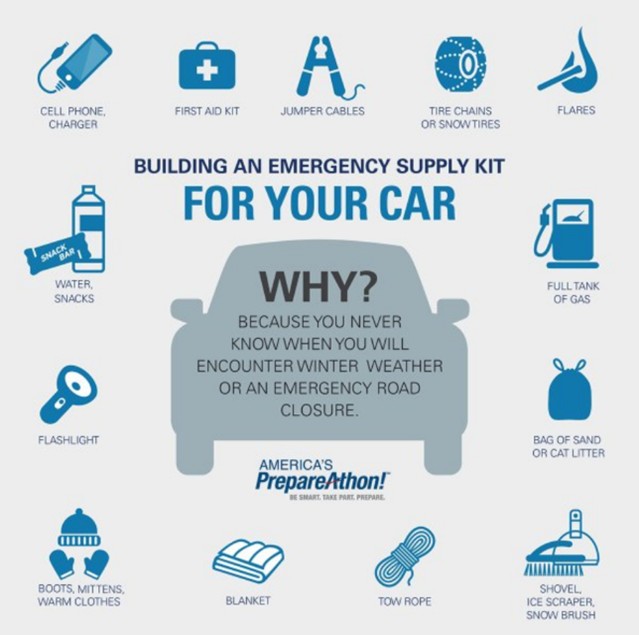Winter Hazard Awareness
Winter Hazard Awareness Week 2025, 17-21 November
Winter is just around the corner and are you prepared?
November 17th to the 21st is Minnesota Winter Hazard Awareness Week. This is an opportunity to begin your and your family’s preparation for what will lie ahead: cold temperatures, windy days, icy roads, and slippery sidewalks.
Lake County Emergency Management, in partnership with Lake County’s Public Health, Sheriff’s Office, Highway Department, and the Safety Office, along with the Minnesota Department of Emergency Management and Public Safety have complied timely seasonal information to increase your awareness and preparation.
Please take a few moments to review the following areas for you and your family’s protection.
Winter Weather:
Weather and alerts: When weather fronts or storms are pending you should listen to a NOAA Weather Radio, commercial radio and television for the latest winter storm warnings, watches and advisories. The National Weather Service (NWS) issues outlooks, watches, warnings and advisories for all winter weather hazards.
Recently the NWS has updated and simplified their advisories and warning, and here is what they mean and what to do.

- Outlook: Winter storm conditions are possible in the next 2-5 days. Stay tuned to local media for updates.
- Watch: Winter storm conditions are possible within the next 36-48 hours. Prepare now!
- Warning: Life-threatening severe winter conditions have begun or will begin within 24 hours. Act now.
- Advisory: Winter weather conditions are expected to cause significant inconveniences and may be hazardous. If you are cautious, these situations should not be life-threatening. Electronic equipment is available to receive weather information: NOAA Weather Radio, radio, television, and cellphone.
Extreme cold: Living in the northland, temperatures will drop well below zero. With those temperatures just adding even a small wind can drive the wind chill effect down to dangerous levels for anyone exposed to it for very long. The best way to avoid any danger is to stay indoors, but if you do feel the need to venture outdoors, make sure to take proper precautions and know how to spot the signs of frostbite and hypothermia.
Heavy Snow and Ice: Another factor living in the northland is the potential for heavy snow. This snow can immobilize a region: stranding drivers, closing airports, stopping the flow of supplies, and disrupting emergencies and medical services. Large amounts of accumulated snow can cause roofs to collapse and knock down trees and power lines. Homes, cabins and farms may be isolated for days, and unprotected pets and livestock may be lost. The individual cost of snow removal, repairing damages, and the loss of business can have severe economic impacts on each of us and the communities we live in.
Outdoor Activities:
Frostbite and hypothermia: Frostbite is the freezing of skin and extremities on the body. The most commonly affected body parts are nose, cheeks, ears, fingers, and toes (your extremities). Even for those of us who have been living in cold climates for most of our lives, we are susceptible.
In very cold weather, a person’s body can lose heat faster than they can produce it. The result is hypothermia, or abnormally low body temperature. The effects can make a person sleepy, confused and clumsy. Be aware that these effects tend to happen gradually and affects one’s thinking, it may not be immediately recognized.
The Center for Disease Control and Preventions has tips on:
Access and functional Needs: Pre-planning is essential for our family members who use a wheelchair, rely on home-delivered meals or are visually impaired. For tips and recommendation during extremely cold weather, please visit:
Children safety: Children are always eager to get out and play in the new snow and may want to be outside all day. Each year, emergency rooms in the United States treat thousands of children for injuries related to sledding and ice skating, and even frostbite.
Thin ice: When is ice safe? Many say there is no such thing as safe ice. Ice thickness and strength depend on multiple factors, such as depth of water under the ice, size of the water body, water chemistry and currents, distribution of load on the ice and local climate conditions. If you venture out include safety measures like testing the ice with ice pick/bar, use the person-rule, have a safety throw rope, wear an official personal flotation device to name a few. For additional ice safety visit:

Winter Home and fire safety:
Heating: Due to the high cost of heating fuels and utilities many of us have searched and will use alternative methods of home heating which is a major contributing factor in residential fires. These alternative sources include wood burning stoves, kerosene and electrical space heaters, which all have their own safety concerns. Prior to using them, make sure they are cleaned and serviced by a professional. In addition, ensure chimneys and exhaust pipes have a minimum of three feet of clearance. Please don’t use an oven to heat your home. For additional fire safety, please visit the US Fire Administration site:
Holiday fire safety: The beginning of winter also signifies the holiday season is upon us. Many will and have already started your holiday decorating to brighten up our wintery days and long nights. These decorations that we use to brighten our day also become a significant hazard if not used carefully. An estimated 250 home fires involving Christmas trees and another 170 involving holiday lights and other decorative lighting occur each year across the U.S. By following a few simple safety tips on electric lights, candles and Christmas trees, you can avoid creating a tragedy. Learn how to prevent a fire or what to do in case of a fire in your home.

Holiday cooking: As with this time of year, comes the families and guests get together. Although we many gather and celebrate in multiple rooms, the kitchen can be the most hazardous room in the house if you don’t practice safe cooking behavior. Careless use of cooking equipment, usually a range or stovetop, is the leading cause of home fires and home-fire injuries in the United States. If we are gathering in other rooms, ALWAYS have someone watching the stove!
CO Alarms: Carbon Monoxide (CO) poisoning can happen at any time of the year, but the danger is greater during the winter when doors and windows stay closed and fireplaces, gas heaters, or other fuel burning appliances are in use. In addition, people can also be exposed to deadly CO levels when “warming up” their cars in garages or keeping them running when stuck in snow.
Keep your alarms ready!
- Carbon monoxide alarms should be installed within 10 feet of each sleeping room or inside each sleeping room, to include every level of your home.
- Test CO alarms monthly.
- If a CO alarm sounds and you feel ill, call 911 immediately. If you feel fine, open windows and doors and call your utility company.
- Clear snow and debris from furnace, dryer, fireplace or oven vents around your home to prevent a CO buildup.
Radon: Radon is a colorless and odorless gas that comes from the soil. The gas can accumulate in the home. Radon gas decays into fine particles that are radioactive. When inhaled, these fine particles can damage the lungs. Exposure to radon over a long period of time can lead to lung cancer.
It is estimated that 21,000 people die each year in the United States from lung cancer due to radon exposure. A radon test is the only way to know how much radon is in your home. Radon can be reduced with a mitigation system.
Mold: During the winter months we close windows, cutting off fresh air supplies. With this, there is a buildup of moisture within your home and there is potential for mold and mildew to grow indoors. While forced air heating systems make indoor air drier overall during the winter months, certain areas of the home may experience intensified levels of humidity because of a lack of ventilation. Prevention measures can include, reduce humidity by using a dehumidifiers, vent your dryers outdoors, and use fans to increase circulation in those stagnate areas.
Winter Driving:
Winter vehicle safety kits: Each year, hundreds of Minnesotans find themselves stranded on the roadside. Winter weather can kill in mere minutes if an unprepared person is exposed to the elements.

511 Information system: The 511 Phone Information System provides regional-level or statewide road safety information 24 hours per day across Minnesota. The Minnesota Department of Transportation’s (MnDOT) website features both a dial-up/static site and a high-speed Internet/Google map site with real-time updates. MnDOT has also created an smartphone application with full site features. Please visit:
Minnesota 511 Travel Information
Snowplow Safety: The MnDOT and our county snowplow operators are trained, experienced and prepared to assist motorists through another winter season. Last year in Minnesota, we experienced 72 crashes involving vehicles that hit snowplows. This is typically caused by inattentive drivers, motorists driving too close to the snowplow or motorists driving too fast for conditions. Our plow operators are monitoring and controlling their vehicle and attached equipment, and their ability to see behind them is limited by side mirrors. Please approach our teams with caution, as their vision can also be hampered by the snow clouds they create while plowing.
Safe driving means: Please review this short-list of driving measures to protect you, your family and the other drivers on the road:
- Check road conditions at www.511mn.org or call 511; it takes time to get roads back to good driving conditions.
- Be patient and remember snowplows are working to improve road conditions for your trip.
- Stay back at least five car lengths behind the plow, far from the snow cloud. Snowplow operators will pull over when it is safe to do so to allow traffic build-up to pass.
- Stay alert for snowplows that turn or exit frequently and often with little warning. They may also travel over centerlines or partially in traffic to further improve road conditions.
- Slow down to a safe speed for current conditions and give yourself plenty of travel time. Snowplows typically move at slower speeds.
- Buckle up and ensure children are properly secured in the correct child restraint.
- Avoid unnecessary travel if road conditions are too poor.
Minnesota Department of Public Safety will have additional daily themed information during the week
To help Minnesota residents minimize the risks of winter, the Minnesota Department of Public Safety sponsors Winter Hazard Awareness Week in November in collaboration with the National Weather Service and other state, federal, and non-profit agencies.
The event includes a media campaign, website promotion and social media posts. The week-long effort provides information that can be used with school, church or civic programs.
The themes for each day are:
- Monday, Winter Storms
- Tuesday, Outdoor Winter Safety
- Wednesday, Winter Fire Safety
- Thursday, Indoor Winter Safety
- Friday, Winter Driving
